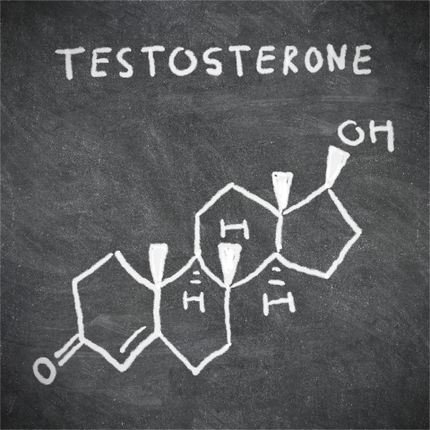
How Is Testosterone Made?
Testosterone is steroid hormone that offers a variety of benefits to both women and men. The 19-carbon long compound is produced inside the body. On average, men produce an average of 7mg daily. However, not all of the testosterone can be utilized inside the human body.
Total testosterone can be categorized as follows:
SHBG-bound, Albumin-bound and total Free Testosterone. Read on to learn more about each, how it's made and it's importance in building muscle and it's important use in other bodily functions.
SHBG-bound testosterone
Of the total testosterone in the body, 40-50 percent of it is linked to a protein known as the Sex Hormone Binding Globulin (SHBG). The SHBG is produced inside the liver and is instrumental in the regulation of free testosterone. The demerit of this compound is that it is not active biologically; therefore the body cannot utilize it for the various body functions. Having excessive SHBG is considered to have negative effects. People who have too much of SHBG testosterone have high levels of total testosterone, yet suffer the effects of low testosterone levels. This is because it cannot be used for the normal testosterone roles. Studies have proven that eating appropriate diet and exercising can reduce the SHBG testosterone, thus increasing the free T.
Albumin-bound testosterone
The rest of the testosterone is linked to a protein referred to as albumin. Albumin is a protein that is made in the liver and is responsible for stabilizing the extra-cellular fluid volumes. Just like the SHBG-bound testosterone, albumin-bound T is also biologically inactive. However, albumin-bound testosterone is different in that the linkage between testosterone and albumin is weak. Therefore, it can be broken easily in order to free the testosterone to play its role in the body.
Free Testosterone
This is the purest form of testosterone. The reason why it is referred to as free is because it is not connected to any protein. Now that it is not bound to any molecule, free testosterone can easily enter cells as well as activate receptors. That way, it can easily perform its bodily functions like it should. To maximize the benefits of free testosterone, one should do his best to maximize the testosterone levels in the bloodstream.
WHERE AND HOW TESTOSTERONE IS PRODUCED
Testosterone is made in the kidneys and the testis. However, only about five percent of the total testosterone is produced in the adrenal glands at the top of the kidneys. The rest of it, which is 95 percent, is produced inside the testicles.
The testosterone production process can be likened to that of the Rube Goldberg contraption. The only difference between these two procedures is that the Rube Goldberg contraption utilizes desk fans and mines while in the body, hormones are used.
Here is a breakdown of the testosterone production process
- The process starts in the brain. It begins when the hypothalamus detects a need for more testosterone. It then produces a gonadotropin-releasing hormone. This hormone finds its way into the pituitary gland at the back of the brain.
- Upon the detection of the gonadotropin-releasing hormone by the pituitary gland, it secretes two hormones. They are the luteinizing and follicle stimulating hormones. These two make their way into the testicles through the bloodstream.
- When the luteinizing hormones as well as the follicle stimulating hormone reach the testicles, they command the testicles to do a few things. The follicle stimulating hormone stimulates sperm production. On the other hand, the luteinizing hormone stimulates the leyding cells to make additional testosterone.
- The testicle’s leyding cells convert cholesterol into testosterone through a complex process scientific process. You are probably shocked, but yes, cholesterol is the major testosterone’s building block. The cells use the readily available cholesterol, and if it is not sufficient, they ask the testicles to produce a little more of it.
- After testosterone is produced, it is sent into the bloodstream. Most of the hormone attaches to albumin and SHBG immediately, thus making it biologically inert. The minor percentage that remains unbound, which is free testosterone, circulates through the bloodstream and it starts doing the work it was produced to do.
- The instance that the hypothalamus detects the presence of adequate testosterone inside the body, it signals the pituitary gland to stop producing LH, so that the testicles stop the testosterone production.
That is how testosterone is made in a nutshell!
As you have read above, the production of testosterone in our bodies is a complex process. That implies that there are various loopholes that can lead to decreased testosterone levels. Simply from reading the process one can note a few of the factors that can affect testosterone levels.
